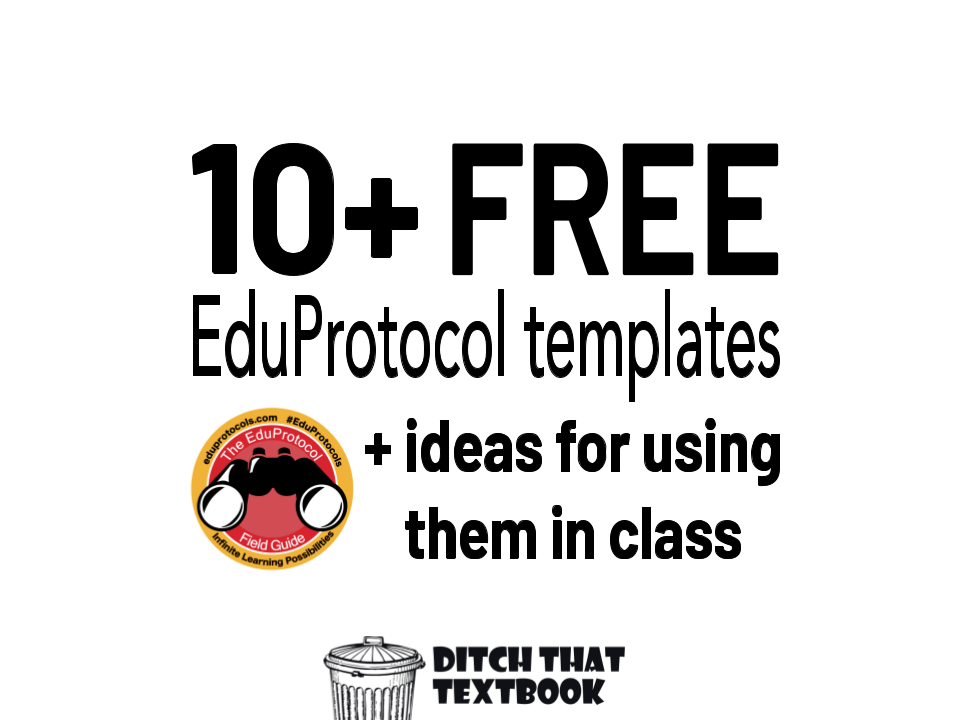
What teacher doesn’t want to save themselves time and teach better? It’s finding those low-prep, high-return activities that we can use right away that can be challenging. That’s where EduProtocols come in.
EduProtocols, created by Jon Corippo and Marlena Hebern, are a series of lesson frames that are easy to adapt to any subject or grade. And the amazing part is that many of their templates are absolutely FREE!
So what exactly ARE EduProtocols? Watch the video below for a short walkthrough.
Ready to get started?
In a past #Ditchbook chat, guest moderators Jon and Marlena, creators of EduProtocols and authors of The EduProtocol Field Guide Series, showered us with loads of FREE resources. And of course, the #Ditchbook community shared tons of great tips, ideas, and resources of their own!
Below you will find:
- More than 10 FREE EduProtocol templates
- 10 tips and ideas for using EduProtocols in your classroom from the Ditch That Textbook community
- 10 Ways to use EduProtocols to wrap up the year by Deploying EduProtocols author Kim Voge
Ready to dive in even deeper?
The EduProtocol Field Guide: Book 1 contains 16 Student-Centered Lesson Frames for Infinite Learning Possibilities. In The EduProtocol Field Guide: Book 2, Jon and Marlena share 12 new lesson frames for even more engagement!
Not just for classroom teachers, Deploying EduProtocols, will help admins, TOSAs, and instructional coaches recognize new ways to adopt EduProtocols across an organization.
The EduProtocol Field Guide: Math Edition provides educators with a treasure trove of modular, innovative, and engaging activities that can be adapted to any grade level.
Get all of the books here!
10+ FREE EduProtocol templates
1
The Fast and Curious EduProtocol
Repetition-based worksheet homework frustrates teachers and students alike. It often struggles to get results and you never know who’s doing the work. Plus, the feedback to students comes very, very late.
There’s an alternative. Try the Fast and the Curious EduProtocol, an idea from Marlena Hebern and Jon Corippo’s book, “The EduProtocol Field Guide.” It provides students with timely feedback. It’s fun. It gives great repetitions. In short: it works!
Check out this video that gives you the step-by-step instructions on how to use it and why it works.
Three additional points from EduProtocols author Jon Corippo:
— This is a pedagogy that applies to any kind of instant CFU product (Kahoot with groups, GoFormative to draw answers, Socrative with open ended questions). The pedagogy of “test light, feedback, test again” daily functions in other apps.
— I’m going to go until we hit 95 percent. On a tough week, that might be on Thursday on the second round. On an easy week, that might be Tuesday on the first round. I’m getting more than one day back!
— The repetitions are important! If a student gets them right the first time, we should be able to get them done faster the second time. It’s like shooting a three-point shot in basketball. You can’t make one and say, “I’ve got it!” It takes repetitions.
2
The Random Emoji Generator Power Paragraph
Use the Random Emoji Generator for story ideas and summarizing practice. EduProtocols has created a kid-safe emojis and animated emojis built in at Eduprotocols.com/class.
The Emoji Power Paragraph for Seesaw
Check out this Seesaw version of the emoji power paragraph by Jennifer Dean. It's a perfect way to use the emoji power paragraph with littles.
3
Cyber Sandwich
In the Cyber Sandwich EduProtocol students work in partners through a structured pair share as they read through content, pair share, then write. You can learn more about the Cyber Sandwich and how it works in this Cyber Sandwich EduProtocol tutorial video.
4
Iron Chef
Iron Chef is modeled after the Iron Chef cooking show. Students will engage in a gamified jigsaw that makes covering content and presenting to peers fun! Check out Eduprotocols Worldwide 1 Iron Chef Second Session where Meghan Cannon and Heather Marshall share tons of ways you can use this EduProtocol in your class.
5
8p*Arts
Quick, easy, and fun way to learn grammar. Learn more about 8*pArts in Eduprotocols Live with Lisa Moe and 8pArts.
Teaching younger kiddos? Check out Eduprotocols Worldwide 1 8*pARTs for Early Years with Lisa Moe and Eduprotocols Worldwide 1 Jennifer Dean & 2 8*pARTS for K-3.
7
Sketch & Tell
With the sketch and tell EduProtocol students develop understanding of concepts through drawing and explaining. Want to know more about Sketch & Tell? Check out Eduprotocols Live - Sketch and Tell with Adam Moler.
8
BookaKucha
BookaKucha puts a new and exciting spin on your basic, boring book report. Use BookaKucha to monitor independent reading progress while connecting back to skills learned in class.
BookaKucha can be a powerful tool in any classroom. Read more about this EduProtocol and how Heather Marshall incorporated it into her middle school class in her post The BookaKucha.
9
Frayer a Friend
During the first few weeks of school use this EduProtocol to build community and learn more about each other. Watch the EduProtocols Worldwide 1 The Frayer Model video below to see how teacher Brian Fish using the Frayer model with high school students.
10
EduProtocols Smart Start
Ready to have the first four days of school planned for you? The Smart Start includes links to directions for each EduProtocol plus TONS of FREE templates! Learn more about Smart Start in this video What is Smart Start?
Get the best start to your school year ever!
Enroll in the Smart Start Your Year with EduProtocols online course
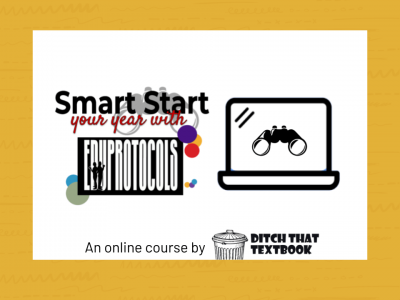
What you'll get:
-Two 45 minute recorded sessions with EduProtocols Master Trainers and Authors
-FOUR days of EduProtocols - based lessons
-Over 20 ready to use EduProtocols Smart Start Lessons
-Free Lifetime Tech Support and access to session recordings

20 ideas for using EduProtocols with your class
10 ways to use EduProtocols in class
From the Ditch That Textbook community
1. Use Smart Start at the beginning of the year, after a long break and again to finish the year strong!
Don’t overlook Smart Reboot (after Christmas break) and Fantastic Finish (to end the year) - that gives YOU more reps before next Fall. 🤔 #eduprotocols #ditchbook
— jcorippo (@jcorippo) September 13, 2019
2. Use the Cyber Sandwich to (GASP) summarize the textbook!
Ss are using the #CyberSandwich @eduprotocols to summarize about the New England, Middle, and Southern colonies using 2 different SS textbooks as their resource. Using some “old” resources for a modern lesson! #upcycle? #USDlearns #LietzPride pic.twitter.com/RUv0KRupQQ
— Leslie Long (@LeslieLong67) March 5, 2019
3. Combine Cyber Sandwich with VR to level up the experience.
YOU HAVE TO CHECK OUT THIS AMAZING LESSON FROM @mrsbyarshistory! It is one of my favorite #CYBERSANDWICH examples. She even incorporates VR for the students to look at! @cnusd @CNUSDInnovatEDU https://t.co/YQGsZimK2r pic.twitter.com/sjYKTVRPiZ
— Amanda Sandoval 💛 (@historysandoval) August 15, 2019
4. Study social interactions with Iron Chef.
Who says using the textbook has to be boring? I made this quick #IronChef #EDUprotocols for my #sociology Ss to learn the concept. Now we are applying the info to the characters in The Breakfast Club. Here's the link: #filemakeacopy https://t.co/1wiEweJODu pic.twitter.com/Q6GvnyFGiq
— 𝗗𝗮𝘄𝗻 𝗦𝗻𝗼𝘄𝗱𝗲𝗻 ☕ (@SnowdenDawn) September 18, 2019
5. Level up the emoji paragraph with fake text messages.
A nice level up for the Random Emoji Power Paragraph. Create dialogue with iFakeTextMessages. @MrsMackieD3 @KVoge71 @JohannMundy @davidtedu @MrZiebarth #eduprotocols pic.twitter.com/Ar8rIL7eZT
— jcorippo (@jcorippo) February 15, 2019
6. Practice phonics patterns with the random emoji generator.
Using our random emoji writing to practice our phonics pattern today. Always a hit! @eduprotocols @jcorippo @mhebern #weareCUE #eduprotocols pic.twitter.com/ESEjRyfFBb
— Meghan Cannon-Johann (@JohannMundy) December 9, 2019
7. Combine Quizlet Live with the Fast and Curious EduProtocol.
We love Quizlet Live! We use it everyday for “Fast & Curious” EduProtocol and it could be individual or Teams! My students also use it during asynchronous learning to learn their vocabularies! #hesdpride #EDUProtocols #quizlet pic.twitter.com/VlHpEzAiZx
— Missey Hernandez (@williamsroom14) September 30, 2020
Have you seen some of these #mathreps on #jamboard?
— 𝕊𝕔𝕠𝕥𝕥 ℕ𝕦𝕟𝕖𝕤 (@MrNunesteach) August 4, 2020
Pretty great stuff! I especially like the template they have for K-2!https://t.co/GVRwrXZ2Cq@MsHinksClass @cogswell_ben @jesush1979 @NowaTechie @jcorippo @cueinc @CentralCalifCUE @cvcue #hyperdocs
9. Incorporate BookaKucha into small group guided reading and literature circles.
Incorporating elements of #BookaKucha into small group guided reading. Once the kiddos have this down, it’ll be time to add in #noticeandnote! #USDLearns #lietzpride #EDUProtocols pic.twitter.com/06re8tOa3Y
— Justin Preza (@MisterJPreza) September 18, 2018
10. Use Sketch and Tell after a read aloud.
We read #TheLorax today and I had to follow up with a Sketch and Tell w/my Ss. Thanks to @moler3031 for the inspiration! 🙌 #EDUProtocols Worldwide 2 @eduprotocols @MrsBarnett_Tchr#DrSeuss #3rdgrade #ReadAcrossAmericaWeek 📚 pic.twitter.com/pVkGe1SmBf
— Isabel Adame (@IsabelAdame17) March 3, 2021
10 Ways to use EduProtocols to wrap up the year
Teach Better- Work Less - Achieve More by Kim Voge
1. Gamify it!
Review facts, dates, vocabulary using the Fast and Curious EduProtocol
The key to remembering is repetition. Gain back valuable teaching time by making the basics fun and gamified.
- Choose your topic and find or create a quiz. We love Gimkit, Blooket, and Quizziz.
- Run the “quiz” and see how your students do round 1.
- Provide a mini lesson to address the gaps.
- Run the “quiz” again to see the immediate impact of review and feedback.
- Repeat this process daily until it is time for the assessment.
2. No Paper Exit Tickets!
Use Thin Slides! Provide a slide deck where students grab a slide and include 1 word or sentence and 1 image to show what they know. This flexible EduProtocol can be used as a way to see what students think they know or as an exit ticket. It can also be used as a way to document what new knowledge is gained. Really flex the collaborative nature of learning with the Thin Slide Study Guide. No need for flashcards…routine review over time will build lasting impact.
3. Make independent reading purposeful with Game of Quotes.
Heather Marshall put together this gem based on “bring your own book”. I found additional quote cards here.
- Students read independently for about 10 minutes.
- The teacher announces the subject on the game card.
- Students search the text they have just read (close reading!) and look for the quote that embodies the topic on the game card.
- When a student locates the “perfect quote” they notify the teacher. The rest of the class has 2 minutes to find their own quote.
- Students share quotes a table group and vote for the winning quote for the table.
- Those students then stand and read their quotes.
- Informal voting can occur to declare a “winner”.
4. Revamp the research project with Thick Slides
Thick Slides quickly became a class favorite in Spring 2021. Students didn’t even realize they were doing a research project. (It’s like slipping the veggies into the dessert!) Thick Slides are a deconstructed paragraph. Students are researching and writing all the parts of a paragraph, but in a highly engaging way that does not lead to paragraphs that start and end with “Let me tell you about” or “I hope you like my paragraph”. As with all EduProtocols, you need to start with a fun, low cognitive load topic. In the samples attached, you will see how we went from favorite food, odd animals, to researching a self selected topic. The template is in there, too!
5. End plagiarism with Parafly
In general, students struggle with putting things into their own words. We need to teach them this skill so they learn how to paraphrase and find synonyms to “put things into their own words”. Last year, Jon came up with Parafly. My sixth grade students successfully paraphrased and were able to metacognate about this activity, explaining their thought processes.
- Find a multiparagraph piece of content, but at a lower lexile.
- Open up Socrative and launch a “short answer” question.
- Copy and paste a paragraph from the article.
- Send out to students, providing them with support as they learn how to paraphrase (invert sentence order, say it in plain language, use synonyms, join ideas)
- Display work on board in class, not showing names. Find some “glows” and “grows” to share aloud. Ask students to verbalize what they notice as well.
- Launch a new paragraph and practice again, repeating this process.
Once you do this a few times, students get the idea. You may need to revisit often or review before the next research project. The instant feedback and repetition are key to this working well!
6. Crowdsource learning with Number Mania.
Number Mania is an innovative way to introduce a topic or summarize learning via an infographic. Students contribute number related facts to a Google Form that auto populates a spreadsheet that students can access. Set the timer and have students begin the hunt for facts. After 7-10 minutes, students create an infographic. I find it helpful to expedite the creation process by providing a template with some icons readily available. Here is a student created sample.
7. Grow writing skills with purposeful practice 3X Genre.
This idea, inspired by Josie Wozniak, allows students to practice 3 genres of writing. Provide an image or gif for your students. Then select 3 genres/purposes for writing. For example, you may have a picture of a skateboard and students need to come up with a title and the first paragraph if they were writing a personal narrative, informative article, or a persuasive letter. This builds on-demand writing skills. This can be used across multiple content areas as well. The picture can be a primary source, artwork, sport, etc. Here is a generic template.
8. Solidify math skills or front load for next year with Math Reps.
Lisa Nowakowski and Jeramiah Reusch wrote the book, literally, about using EduProtocols for Math. Lisa’s Math Reps website has templates ready to go. You basically supply a few numbers and students practice multiple standards based on a domain of learning.
9. Use the Random Emoji Generator for story ideas and summarizing practice.
Have your kids ever ASKED to write? We have kid-safe emojis and animated emojis built in at Eduprotocols.com/class Here’s the flow:
- Teacher opens up Socrative and launches a Short Answer question. Students join class.
- Teacher opens Eduprotocols.com/class in a new tab, displaying this for the class.
- Teacher clicks to reveal the first emoji.
- Students write a sentence BUT THEY DO NOT submit.
- Teacher reveals next emoji and the process repeats until all 5 emojis have been revealed.
- Now that students have 5 sentences, they press submit.
- The teacher can display paragraphs without student names and provide some global feedback.
- The paragraphs can be sent out to be viewed and voted on by students.
NACHO Paragraph (as in “It’s not your paragraph” is a great follow up where students can edit a classmates’ paragraph. Here is an example of how I used this with my students.
10. Keep the collaboration going with Iron Chef.
Think Jigsaw, but with a twist. Students work in groups on a slide deck, each with their own focused piece. They note the facts, vocabulary, or information about a provided topic. They insert a picture or gif and then the Secret Ingredient. The Secret Ingredient is often a way for students to connect to the material, provide an additional random fact, something humorous, or even a vocabulary word in context. You can grab the Iron Chef template here.
As with ALL EduProtocols, be sure to introduce using low cognitive load material. A commercial, picture book, or low lexile passage are ideal. Once students understand how to use the protocol, then you can dial up the information and cognitive load.
More EduProtocols!
Scroll through this Wakelet of over 50 collections of EduProtocol resources! You'll find more templates, video tutorials, tips, ideas and tons of inspiration.
For notifications of new Ditch That Textbook content and helpful links:
Are you looking for quality, meaningful professional learning that both equips and inspires teachers?
Matt provides in-person and virtual keynotes, workshops and breakout sessions that equip, inspire and encourage teachers to create change in their classrooms. Teachers leave with loads of resources. They participate. They laugh. They see tech use and teaching in a new light. Click the link below to contact us and learn how you can bring Matt to your school or district!
Is Matt presenting near you soon? Check out his upcoming live events!

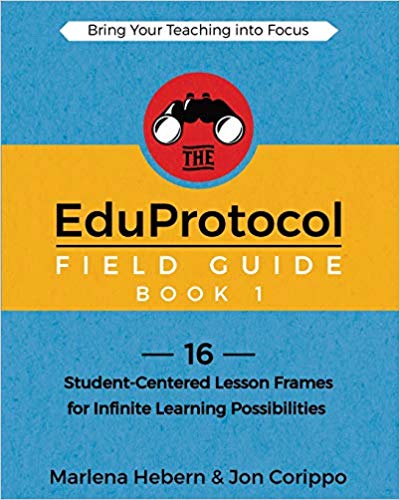

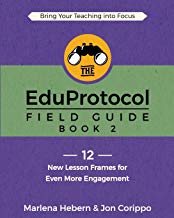
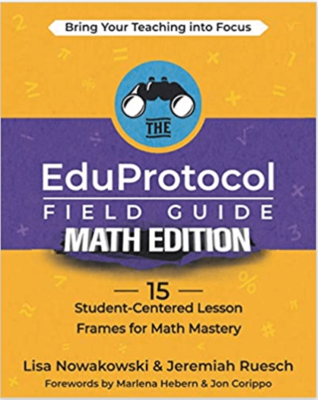




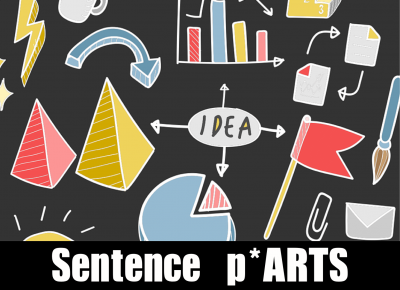

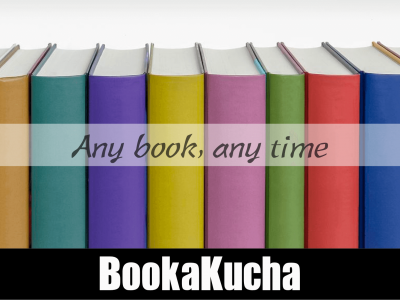
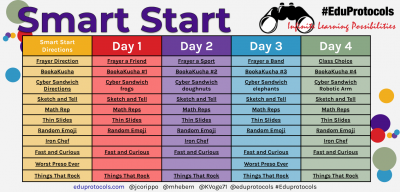


Thank you, this was very helpful and indeed saved me a lot of time!